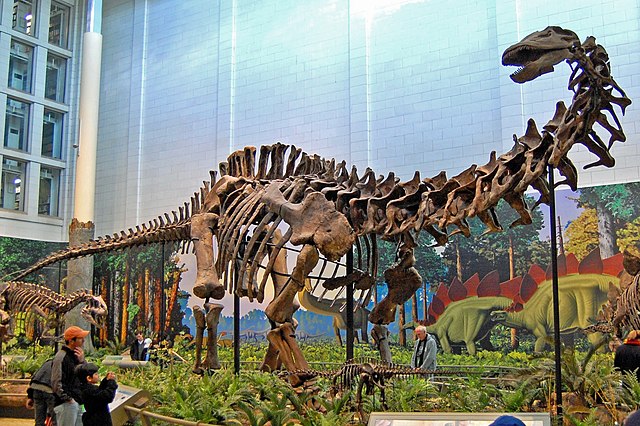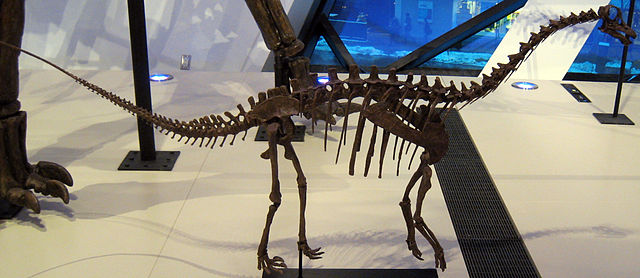Mamenchisaurus is a genus of sauropod dinosaur known for their remarkably long necks which made up nearly half the total body length. Numerous species have been assigned to the genus; however, the validity of these assignments has been questioned. Fossils have been found in the Sichuan Basin and Yunnan Province in China. Several species from the Upper Shaximiao Formation, whose geologic age is uncertain, have been described. However, evidence suggests this formation to be no earlier than the Oxfordian stage of the Late Jurassic. M. sinocanadorum dates to the Oxfordian stage, and M. anyuensis to the Aptian stage of the Early Cretaceous. Most species were medium-large to large sauropods, measuring roughly 15 to 26 meters in length—possibly up to 35 meters (115 ft), based on two undescribed vertebrae.
Mamenchisaurus
M. jingyanensis skeleton, Beijing Museum of Natural History
NSM PV17656
Artist's impression of M. youngi
Sauropoda, whose members are known as sauropods, is a clade of saurischian ('lizard-hipped') dinosaurs. Sauropods had very long necks, long tails, small heads, and four thick, pillar-like legs. They are notable for the enormous sizes attained by some species, and the group includes the largest animals to have ever lived on land. Well-known genera include Apatosaurus, Argentinosaurus,
Alamosaurus, Brachiosaurus, Camarasaurus, Diplodocus, and Mamenchisaurus.
Sauropoda
Reconstruction of Ampelosaurus
Some sauropods, such as Alamosaurus sanjuanensis, formed herds segregated by age.
Cast of Toni, a juvenile brachiosaurus (restored as a diplodocid)








